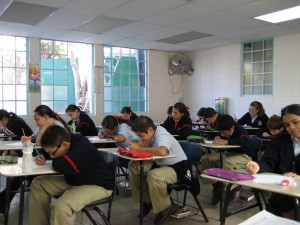Two Questions
Yes, just two. But the first one is rather large and the second one is deeper.
Exam Date
These all use official dates published by the campus.
- Monday April 4th in class.
Question One
Show that you understand the following concepts (applied to the language of your version of the course). Yes, some are repeated from last partial to give overlap:
- What are inheritance and polymorphism? (Specification and implementation)
- What is delegation?
- What are CRC cards and how do we use them?
- What are overloading and overwriting? How do we implement those in Java?
- What do you feel are the benefits to object-oriented programming?
- Why do you think your change to object-oriented programming is difficult or what makes it difficult for the standard student?
Question Two
What should your grade (scale of 1 to 100) be for partial #1 in this course? Why, this should be based on evidence that you have left here on this exam and in your blog posts about WSQs, quizzes, project work and any other posts as well as participation in class and outside of class through comments on other blogs, Twitter and more.
A rubric will be provided here but you should be considering (scale of 1 to 4).
Here is the rubric we will use for this partial grade. I will print and include this on the exam.
- How is your attendance in the course?
- Have you visited Ken in his office for individual help?
- How many of the WSQs have you done?
- What is the “quality” level of your blog posts?
- How often have you commented on other student’s blog posts?
- How often have you asked questions about #TC201 on Twitter?
- How often have you answered questions about #TC201 on Twitter?

![]() Partial Exam #2 by Ken Bauer is licensed under a Creative Commons Attribution-ShareAlike 4.0 International License.
Partial Exam #2 by Ken Bauer is licensed under a Creative Commons Attribution-ShareAlike 4.0 International License.
